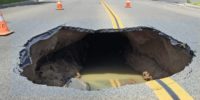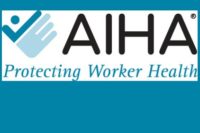Problem statement: “The staggering death toll (over 17 million estimated deaths) is both a profound tragedy and a massive global failure at multiple levels.” This is what the Lancet Commission on lessons for the future from COVID-19 pandemic, published September 2022 (1), determined. Now the world needs to fix what is broken.
Among the things that are broken is low public trust in health science and an “epidemic of health misinformation and disinformation,” per the Commission. As time unfolds, various local and global organizations will effect plans to boost the publics’ acceptance of health science while the organization simultaneously combats health misinformation and disinformation.
Findings that support the Lancet Commission’s lessons for U.S. institutions include:
In February 2022, Pew Research Center, measured that nearly one-quarter of Americans have “Not too much/No confidence at all” in scientists and medical scientists. Results reflect a nearly 10% drop from pre-pandemic levels. (2)
Addressing concerns, the American Association of Medical Colleges (AAMC) launched in May 2022 a series of articles on “Why do so many Americans distrust science?” (3). The articles provide recommendations to help future medical doctors boost credibility in health science.
In June 2022, the American Medical Association (AMA), published their detailed plan to stop the public health “infodemic” (4).
Getting back on track – NIOSH focus on health
Covid-19 interrupted and disrupted many concepts in health science plans. NIOSH Strategic Plan: FYs 2019-2026, Version 6: October 2022 (5), for example, was adjusted to reflect time and resources that NIOSH researchers devoted to Covid-19 demands. Now is the time for NIOSH to get back on track. OHS pros should be aware that only one of NIOSH’s seven strategic goals address traumatic injury. NIOSH’s strategic plan is weighted almost entirely toward health science objectives such as reduce occupational cancer, reduce occupational hearing loss, reduce occupational immune, infectious, and dermal disease, and reduce occupational respiratory disease. Given NIOSH’s research direction, an OHS pro’s future efforts e.g., training and skills should align more toward health concerns.
Cancer “Moonshot”
With Covid-19 winding down, a renewed focus on health improvement, partly described above, is emerging. This past February 2022, President Biden, for example, reignited his call for a “moonshot to end cancer as we know it.” The moonshot, with collective efforts by many, hopes to reduce the age-adjusted death rate from cancer by at least 50 percent over the next 25 years.
It is important for OHS pros to be aware that NIOSH’s Strategic Goal 1 begins with “reduce occupational cancer.” NIOSH focus is to reduce cancer in the following work settings: agricultural forestry and fishing, healthcare, manufacturing, mining, and public safety. OHS pros should establish a priority to better understand types of occupational cancer and exposure controls.
NASA moonshot achievements
NASA is the world’s leading scientific organization. Modern day camera phones, scratch-resistant lenses, CAT Scans, mobile computers, computer mouse, wireless headsets, water purification systems, ear thermometers, home insulation, freeze dried food, baby formula – and so much more – originally began from NASA inventions. Recent deployment of NASA technologies such as the James Webb Space Telescope, Double Asteroid Redirection Test (DART) to redirect asteroids that may threaten earth, and the Artemis missions - true moonshots (and next to Mars) - are phenomenal achievements. NASA’s advancement of health science rivals any organization. OHS pros may highly benefit from an understanding of how NASA operates.
NASA Procedural Requirements (NPR)
Corporate policy establishes a destination that should be reached. Individual procedures are like one part of a map that leads to the specified destination.
As a tax funded, federal agency, NASA’s NPRs are laid bare for anyone to examine – or imitate as the situation allows. NASA’s NPRs can be found at NASA Online Directives Information System i.e., NODIS Library (8). While NPRs are not generally written for public consumption. Many of the NPRs, however, are written in plain language to conform to the Plain Writing Act of 2010 (8). Plain writing allows for better understanding and use when information is intended for a public audience. Even where the NPR is not intended for public consumption, they are mostly written for employee use, and most NPRs are well written and worthy of imitation.
NPR 1800.1D
While it is important for an OHS pro to scan all NPRs that may be of interest to your organization, the NPR that should be of prime health science interest to OHS pros is NPR 1800.1D, NASA Occupational Health Program Procedures, active to December 6, 2022. Be aware that an NPR may reference requirement(s) in one or more of other NPRs.
NPRs should be considered best practice. NASA OHS topic experts develop NPR chapter sections e.g., 2.12 Infection Control, found in NPR 1800.1D. Many of the chapter sections have been audited by outside OHS pro third parties.
The first objective of using NPR 1800.1D is to confirm that your organization has an applicable procedure that addresses each topic found in 1800.1D. For example, I often find that non-NASA organizations have not established a written procedure that clarifies the health and safety requirements for Shift Work and Balancing Work-Rest Cycles or do not have a written procedure for Reproductive and Developmental Health.
Next, confirm that the elements within your organization’s procedures address each element in an NPR. For example, if your organization has a reproductive and developmental health procedure, but the procedure does not require that work area hazards be described in a written JSA or JHA, then a procedural deficiency exists that should be closed.
Building trust in health science
As the Lancet Commission, and organizations such as AAMC, AMA, and NIOSH, among others, effect plans and programs to boost public trust in factual health sciences, workers will look to corporate and site OHS pros to see if management is keeping pace with best health science information. NASA is the world’s leading scientific organization. Freely admitting that management learns and imitates NASA on how to control OHS concerns is wise and beneficial.
References:
1. https://www.thelancet.com/pdfs/journals/lancet/PIIS0140-6736(22)01585-9.pdf
2. https://www.pewresearch.org/science/2022/02/15/americans-trust-in-scientists-other-groups-declines/
3. https://www.aamc.org/news-insights/why-do-so-many-americans-distrust-science
4. https://www.ama-assn.org/delivering-care/public-health/ama-details-plan-stop-public-health-infodemic
5. https://www.cdc.gov/niosh/about/strategicplan/pdf/NIOSH-Strategic-Plan_V6_Oct-2022.pdf
7. 20 Inventions We Wouldn't Have Without Space Travel: https://d2pn8kiwq2w21t.cloudfront.net/original_images/infographicsuploadsinfographicsfull11358.jpg
8. https://nodis3.gsfc.nasa.gov/Rpt_current_directives.cfm



